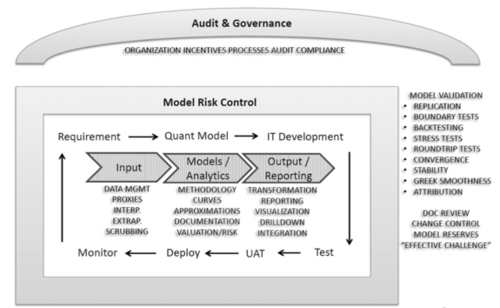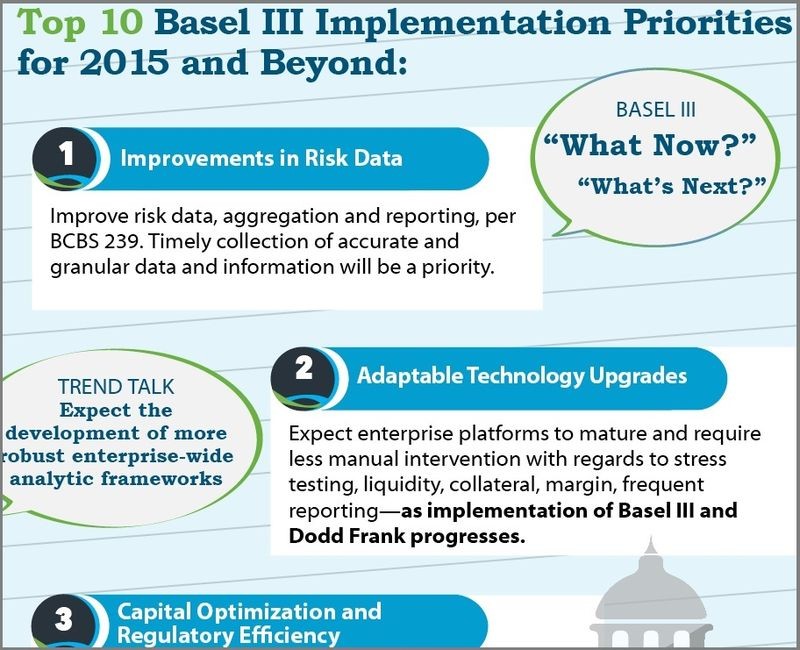Counterparty Risk Takes Center Stage Insights from Global Derivatives Trading and Risk Management
Post on: 30 Май, 2015 No Comment

Recent Posts
April 26, 2013
Counterparty Risk Takes Center Stage — Insights from Global Derivatives Trading and Risk Management Conference 2013
Risk took center stage at the 20th Annual Global Derivatives Trading and Risk Management Conference in Amsterdam according to Numerix Chief Strategy Officer Satyam Kancharla. who joins CMO and host James Jockle to discuss this year’s highlights.
From CVA and DVA to a major focus on Funding Value Adjustment ( FVA). Kancharla discusses how counterparty risk and back-office demands have evolved to drive much of this year’s agenda. He also explores key points from risk technology presentations on the rise of the Analytics Server and narrowly focused return of GPUs.
Numerix Global Derivatives Presentation: FVA for General Instruments, Alexander Antonov
Watch the video: Counterparty Risk Takes Center Stage — Insights from Global Derivatives 2013
Weigh in and continue the conversation on Twitter @nxanalytics , LinkedIn. or in the comments section below.
Video Transcript: Counterparty Risk Takes Center Stage — Insights from Global Derivatives 2013
Jim Jockle (Host): Hi welcome to Numerix video blog I’m your host Jim Jockle. Paris has its airshow, Detroit has its auto show, but in the world of Quantitative Finance. we have Global Derivatives. with me today fresh back from Amsterdam, Satyam Kancharla. CSO from Numerix. Welcome.  
Satyam Kancharla (Guest): Hi Jim.
Jockle: So as the showcase of quantitative finance, usually thematically it’s the presentation of the best and the brightest new models coming to market. Thematically it’s really been about volatility over the past couple of years. But really, risk has taken center stage ̶ namely around funding and the implications for derivatives. Tell us about some of the sessions that you were going in and how this event has really changed.
Kancharla: Yeah that’s so true. In the past several years what we’ve seen is a focus around modeling volatility, modeling correlation, modeling complex exotics, and so on. But what I have found this time, and as was the trend last year, there’s such a focus on CVA. DVA. Risk, as well as funding capital optimization, and collateral.
All of which are focuses of the risk department, the back office or the technology department. These are what are coming into focus, as opposed to introducing new models. I saw that all the discussion was really around implementing the existing models better, faster, making them more stable, making them scale. As well as taking the same analytic methods, the quantitative finance methods into risk analysis, mainly market risk, credit risk and CVA, DVA, Potential Future Exposures (PFE ), FVA, things of that nature.
Jockle: So let’s focus on FVA a little bit because it’s clearly one of the more debatable topics right now in quantitative finance and its role in valuation. Especially in terms of traditional schools of thought, where one side is saying it’s outside and shouldn’t impact valuation from a more traditional method, and yet there seems to be a school of thought moving away from that. What kind of elements of the FVA debate were being bounced around?
Kancharla: Well I think it’s now pretty much understood and recognized by everyone that FVA is a necessary part of valuation. In fact, John Hull presented and he had presented different points of view. And I think now that there’s general consensus that FVA itself is an important measure, because the cost of funding is not something that we can ignore anymore – especially when interest rates are so low, and returns are so low. The cost of funding, the few basis points here and there, they make all the difference and institutions really need to be careful about the capital impacts and collateral impacts of their decisions. So FVA is really center stage. In fact there were multiple presentations. Just looking through the entire three day Global Derivatives sessions, so many of the sessions, I would say more than fifty percent, were focused around risk and analytic measures around CVA, DVA, etc. In fact even Numerix made several presentations in that area.

Jockle: So, of interest though, we had a conversation with Udi Sela from Numerix the other day around volatility that is back into the market place as it relates, especially around gold and some of the changes that are going on in terms of the market dynamics and the uncertainty of the economy. Would this suggest, or at least this quantitative focus moving towards risk, that volatility is advanced to a point that is being effectively managed within the models? 
Kancharla: Well that’s one way to interpret it for sure. Volatility modeling has been a focus for several years. We have a number of models that do that, although it’s never really perfect and there are issues around calibration, stability and optimization. We see that some of those issues are now secondary because of the focus on bringing risk into the front office.
Jockle: So in terms of bringing risk into the front office, going through the agenda, an interesting presentation by Igor Geninson of Commonwealth Bank of Australia on the “Analytics Server: A Quant-Friendly Pricing & Risk Framework”. I know that’s something we’ve talked about and something we actually sell into the market, can you give us some insights on that assumption?
Kancharla: Yeah, sure. It is first of all in conferences like this, it’s very good to see validation for a number of areas that we’re investing in as a company, a number of product investments that we’re making, and at the same time see some new ideas. In this case, it was great validation for CrossAsset Server. It looks like this is an area that banks are starting to talk about now. An analytic server that is not Excel, that is not your front to back system, that’s not your risk system. It’s a separate piece of analytic enterprise server that is able to serve up cutting edge analytics to all of the different desks, and all of the different functions that exist within a bank.
Jockle: And another one that was very interesting, “GPU Acceleration For Interest Rate Modelling In Practice ”. Given a lot of the arguments around cloud and the availability or cheapness of compute at this point, tell us the role of GPU’s. They seemed to be very popular,it seemed to disappear, and now it’s back.
Kancharla: Yeah, GPU keeps coming back and going back. I think there are some specific cases where GPU helps a lot.  I think that’s the bottom line, there are some specific confrontations where GPU helps a lot. But A: it is not general, and B: it requires you to really rethink and redesign your library from the ground up – which is a big investment in most cases.  So what we’re seeing is specific applications but not a wide adoption of GPU.
Jockle: So in many ways, compute still reins the roost as it relates to acceleration for a lot of these calculations, especially if it’s real time. Well at least no one’s talking about parallel processing anymore!
Satyam I’d like to thank you so much for joining us, and giving your reflections on Global Derivatives. And again, join the conversation, follow us on twitter @nxanalytics or on Numerix Blog. feedback is always welcome, we want to talk about the topics that you want to hear about. We’ll see you next time.














